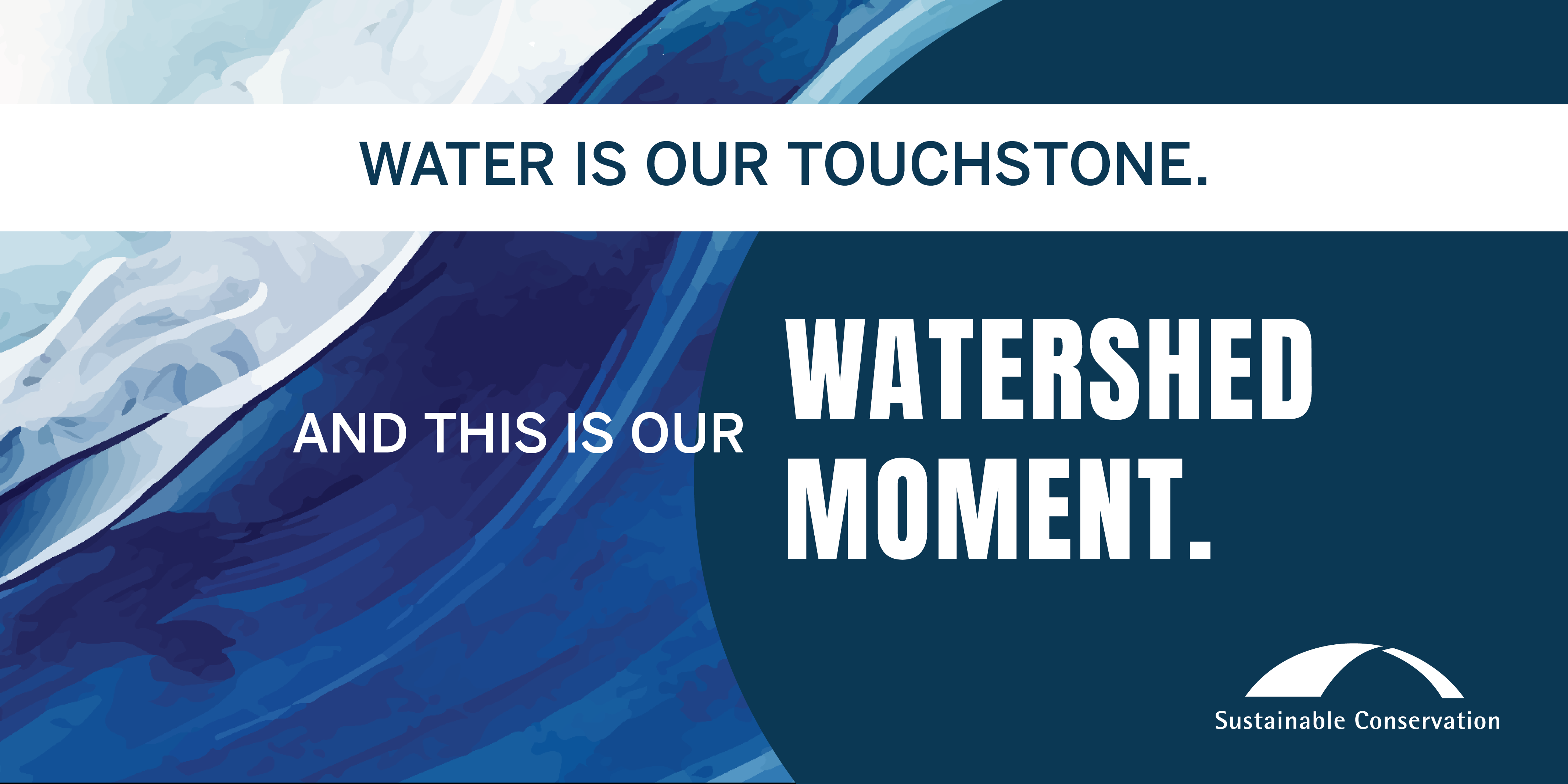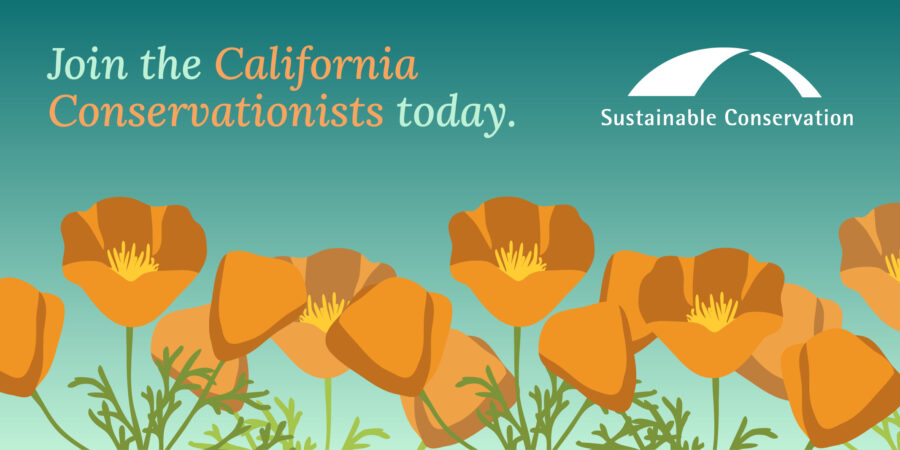
And that’s a wrap on our 2023 Our Watershed Moment webinar series! This series mirrored our organization-wide Watershed Moment campaign that connects all our programs through water sustainability. Each of the three enlightening conversations delved into water sustainability in one specific arena: water for agriculture, water for wildlife and the environment, and water for people.
The series would not have been possible without the generous time provided by our expert panelists, staff members, and guests. Sustainable Conservation would like to extend our deepest thanks to all participants and to our sponsors Environmental Science Associates, Holland & Knight, Iron Horse Vineyards, and Spottswoode Estate Vineyard and Winery for supporting Our Watershed Moment webinar series and sharing our vision of stewarding our most precious natural resources for all Californians.
Missed any of the webinars or want to revisit the conversations? Watch the recordings below at your convenience!
A Holistic Approach to Water Resilience – October 17th
Water for Agriculture
As this extraordinary year of storms shows us, climate extremes dominate California’s weather cycles and continually threaten our water future. This webinar focused on the importance of a whole-systems approach to bolster resilience and ensure clean drinking water for communities, sufficient flows in rivers for fish and wildlife, and reliable irrigation supplies for farming.
Sustainable Conservation’s Director of Resource Stewardship Daniel Mountjoy moderated the expert panel of Aaron Fukuda, General Manager, Tulare Irrigation District; Christine Gemperle, Almond Farmer, Owner, and Operator of Gemperle Orchards; and Jenny Marr, Supervising Engineer, California Department of Water Resources. All 3 panelists are among the foremost groundwater recharge experts in the state, and the collective insights they provide are extraordinarily valuable.
Christine, who has long been one of the most outspoken grower voices in the groundwater recharge landscape, said that she promotes recharge not just for the long-term economic viability it pursues, but for community stability. When her neighbor’s drinking water wells went dry, she knew she could make a tangible impact by recharging excess floodwater on her orchards. According to Christine, there are 3 distinct beneficiaries of groundwater recharge: the grower who recharges on their land, the community, and the environment.
Jenny acknowledged that, from a water management perspective, few tools are as vital to water sustainability as groundwater recharge. “To have that sustainable water future in California, as water managers and as water stewards, we don’t have a choice but to increase and promote recharge,” Jenny said. She described the inherent multi-benefit aspect of recharge, including weed suppression, reduced need for pesticides, enhanced soil health, and better air quality due to higher water content in soil. “Multi-benefit recharge is not a ‘nice-to-have,’ it’s a ‘must-have’ in a groundwater manager’s toolkit,” she said.
Daniel asked Aaron how water management decisions are framed by the amount of water in the ground and available as surface water. Aaron said that his irrigation district treats underground aquifers as a “bank account,” and that in the historical wet winter this year, TID actually reduced groundwater use allocations. He explained that it is essential to protect groundwater when the water table is high, and the most effective way to replenish groundwater is to let it refill during wet years by striving to sustainably use surface water when possible. The 3 panelists all echoed the importance of preparation for groundwater recharge.
Growers who had water rights and diversion systems established before this winter were able to take on a lot of water, but others couldn’t capitalize. Similarly, water districts who had recharge programs in place before the wet year were able to get thousands of acre-feet back into the ground.
Restoring our Water Resources – November 7th
Water for Wildlife and the Environment
Rivers and streams are the lifeblood of a watershed. They play a key role in regulating our water quality, providing wildlife habitat, irrigating our food, giving us recreation opportunities, and being a key barometer of natural and human health. Habitat restoration and streamflow enhancement projects are a key part of working holistically to secure a sustainable water future for California’s communities, agriculture, and wildlife.
Sustainable Conservation’s Senior Project Manager Stephanie Falzone moderated the thoughtful discussion between Troy Cameron, Associate Scientist at Trout Unlimited; Pete McHugh, Senior Environmental Scientist at the California Department of Fish and Wildlife; and Kellyx Nelson, Executive Director of San Mateo Resource Conservation District.
Kellyx began the conversation by using the SMRCD’s Water for Farms, Fish, and People program to exemplify how all ecosystems, communities, and food systems are necessarily connected by our state’s waterways. The program focuses on efficient water management and conserving water resources while expanding storage of water systems during times of high flow. Increasing water storage can mitigate flood risk during the wet season, reduce water demand during dry seasons or droughts, and maintain a more consistent flow for riparian ecosystems and fish.
Furthermore, the program is a great case study for collaborative and productive organizational partnerships, such as with Troy’s Trout Unlimited team. In response, Troy expressed his gratitude for having additive partnerships such as SMRCD. These partnerships help Troy and his team focus on what they do best: measure, monitor, and survey waterways to build up long-term datasets that track flow, species, contaminants, and more.
Pete drew a connection between streamflow enhancement projects and the multiple benefits healthy river systems provide. He believes that considering the bigger picture of these relationships can encourage wider collaborations and larger, watershed-level projects across the state. Furthermore, Pete is a strong believer in creating a coherent network of water rights holders who are willing to support these streams with unused water flows. This collaborative network could leverage smaller public and private water users to scale up stream restoration and flow enhancement projects in California.
The panelists wrapped up the discussion by highlighting the restoration technique of building wood-based beaver dam analogues (BDAs), then letting beavers inhabit and maintain the dam. Strategically placing BDAs in streams is a low-cost and minimally invasive way to slow down flows and increase in-stream water storage.
Throughout the webinar, all 3 panelists echoed their appreciation for the highly collaborative and symbiotic ecosystem of agencies and organizations that are dedicated to watershed enhancement throughout the state. Kellyx shared that it’s an especially exciting time to be a restorationist because of the recent momentum from successful restoration projects and increased interest and funding in similar upcoming projects. “I feel hopeful because we can stand on the shoulders of previous restoration efforts,” she said.
A Community-Based Path to Water Sustainability – December 7th
Water for People and Communities
More than one million Californians in the San Joaquin Valley do not have access to reliable, affordable, or clean drinking water due to severe groundwater overdraft. With climate change causing drought cycles to intensify and recur more frequently, there’s pressure on all water users to adapt, but communities like those in the San Joaquin Valley remain particularly vulnerable. As we work towards long-term water sustainability and climate resilience, it’s essential that we take a community-centered approach that balances both water quality and quantity.
Sustainable Conservation’s Water for the Future Program Director Aysha Massell led the conversation around community drinking water sustainability with the expertise lent by Jenny Nunez-Rodriguez, Senior Administrative Analyst at Madera County Water and Natural Resources Department; Jasmine Ramirez, Community Development Specialist with Self-Help Enterprises; and Caroline Harrow, Board Member of Fairmead Community and Friends.
Fairmead, California is a rural community in Madera County that largely relies on domestic wells for its drinking water supply. In recent years, Fairmead has seen more and more of their wells drying up, leaving their community with extraordinarily precarious — or nonexistent — access to water.
Aysha kicked off the webinar by asking the panelists why wells are going dry, and what hope there is for potential solutions. Caroline cited over-pumping of groundwater aquifers as the main culprit for lowering the subterranean water table below a point where most domestic wells lie. She acknowledged growers who have made a difference by switching from flood irrigation to more efficient drip irrigation systems in recent years.
As Jenny then pointed out, groundwater pumping was virtually unfettered until the Sustainable Groundwater Management Act (SGMA.) She believes the regulation has already made a tangible impact on groundwater sustainability and sets a promising legislative precedent.
In the discussion around groundwater overdraft, growers, especially almond orchards that make up a large percentage of irrigated land around the Fairmead area, often find themselves at the wrong end of pointed fingers. All three panelists emphasized how Central Valley communities and agriculture depend on each other, and characterizing water allocations as a zero-sum game with the two sides pitted against each other is harmful and untrue. Caroline and Jenny both stressed that communities do want local agriculture to be viable and profitable, but agricultural water use must transform for both communities and farms to thrive.
The rest of the webinar focused on two avenues for ensuring safe, accessible, and affordable drinking water for Central Valley communities: representation and education. Jasmine emphasized that equitable representation in the drinking water policy landscape is a must, and that while there are no SGMA-based requirements to address benefits to disadvantaged communities, placing residents on the boards of Groundwater Sustainability Agencies (GSAs) is a great measure to ensure community and tribal voices are heard. Furthermore, community education, such as the English and Spanish water and policy glossaries provided by Self-Help Enterprises, can help bridge the technical concept and language-based inaccessibility of GSA meetings, documents, and policy. Caroline shared that she has seen firsthand how community education around SGMA legislation and water policy have increased the visibility of water accessibility issues in her community. More equitable and accessible materials mean communities can weigh in on policy-level decisions that directly affect them.
What’s Next?
One last huge thanks to all the guests, panelists, and staff members who organized and moderated the webinars. We’ll be back in 2024 with more discussions on stewarding our state’s most precious land, air, and water resources.

Become a California Conservationist today to support our events and experts as we chart a course for California water. Join our community and receive exclusive benefits for as little as $5/month!
